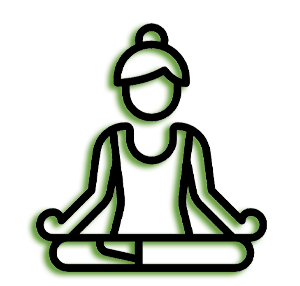
07 Jul HOW TO GET STARTED: MEDITATION
When the Beatles traveled to India in 1968, it wasn’t to perform Sgt. Pepper’s Lonely Heart Club Band, Ob-La-Do, Ob-La-Da, or any of their other massive hits for an Eastern audience. In fact, it was they who played the role of audience to the Maharishi Mahesh Yogi, the creator of Transcendental Meditation. With this event, the Beatles opened a new era of spiritual enlightenment in the West, shining a spotlight on the practice of meditation as a way to raise consciousness and connection with the universe.
But even as a cultural revolution swept Western society in the 60s and 70s, ushering in new openness and freedom of expression, the mainstream population still didn’t quite get what meditation was all about. It remained on the fringe, something eccentric to dabble in. Only recently has meditation gathered steam as a credible practice. Thanks to a slew of new services and products, meditation as an industry surpassed the $1 Billion milestone in 2017.
So, why should you adopt meditation? There is a growing body of evidence that a steady meditation routine can decrease, stress, anxiety, anger, and depression. In addition, it has been proven to improve mental clarity and increase personal performance.
There is also great emphasis on Mindful Based Stressed Reduction (MBSR) as a treatment for chronic pain, which can help combat the opioid abuse crisis in the United States. In a small but breakthrough study published in the Journal of Neuroscience, meditation was shown to have decreased pain levels in participants regardless of whether or not their opioid pathways were blocked (24% reduction for meditating participants with actively blocked pathways; 21% reduction for those administered a placebo). The non-meditating participants reported increased pain, also independent of their opioid pathway blockage. The study is significant because it demonstrates that meditation works in ways different from how opioids operate.
When it comes to weight loss, the link between the effects of stress and weight gain is well established. Chronic stress raises cortisone hormone levels, which elevates stubborn and dangerous belly fat. The stress-reducing effects of meditation can help keep cortisol in check, reducing the risk of abdominal weight gain as well as inflammation.
With the many benefits meditation offers, why do only 8% of US adults practice? The top reasons for not meditating include not having enough time, not knowing how to do it correctly, and not believing that they can calm their mind or sit still long enough for it to be effective.
You don’t have to travel to an ashram in India or climb to the top of a mountain every day to practice meditation. You can do it anywhere. Contrary to popular belief, there is no real right way to do it. Meditation encourages the removal of all judgment, which ironically is very difficult for most people to do.
To get started with a meditation routine, here are a few simple steps:
- Always start out with five minutes each morning
Even with the best of intentions to meditate, most people can legitimately forget to do it during their busy days. To avoid this, you should make it a point to always start your day with meditation, even for just five minutes. Studies show that having a morning routine is a marker of success, and meditation can help you establish that. One other tip – use a timer with a gentle tone to bring you out at the end of your session.
- Focus on your breath
We are all familiar with the constant chatter in our heads, zinging from one subject to the next without any apparent reason. In meditation, you can hush this voice by simply focusing on each breath you take.
Finding a quiet seat (don’t lie down because you might fall asleep!), close your eyes and just count your breaths as you slowly inhale and fully exhale. If you find your mind wandering, don’t criticize yourself. Just bring your mind back to your breath. Note that you don’t necessarily have to achieve an empty mind devoid of thought. You simply just let the thoughts pass through, without concern or judgment.
- Take note of your feelings and surroundings
As you breathe in and out, you’ll likely feel sensations unique to that meditation session. It could be the warmth of sunlight passing over your face or the sound of someone’s voice in another room. Don’t let these sensations distract you, but be sure to acknowledge them as they happen. Doing so keeps your mind in the present, preventing it from rehashing past memories or worrying about the future.
Another great way to get started with meditation is with technology. Did you know there are now over 1000 meditation-focused apps? Some of the most popular include Headspace, Calm, Buddhify, and InsightTimer. They offer a number of different types of guided meditations to help you reduce stress and raise awareness.
The practice of meditation in Western society has come a long way since that famous Beatles encounter with the Maharishi. We hope this encourages you to give it a try to see how it benefits your mind, body, and soul.


